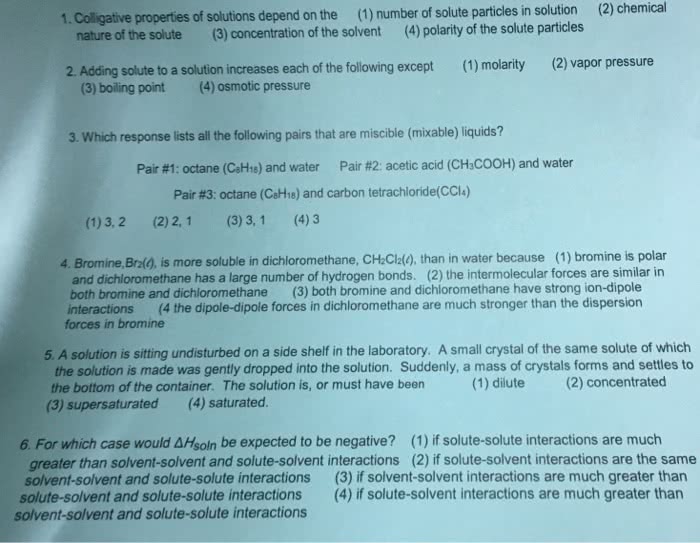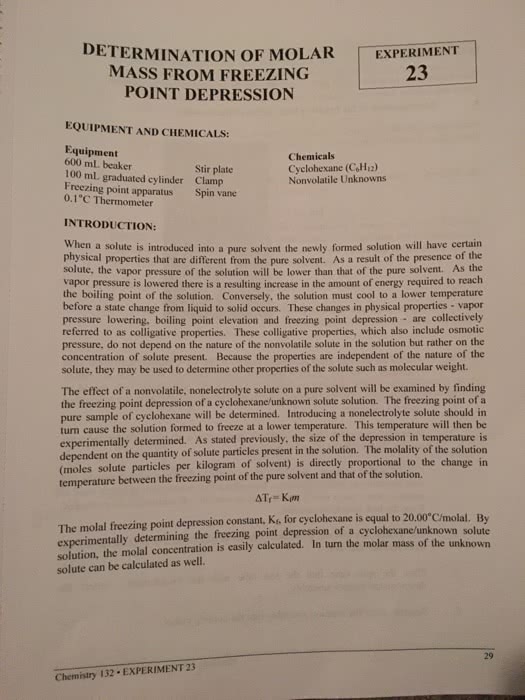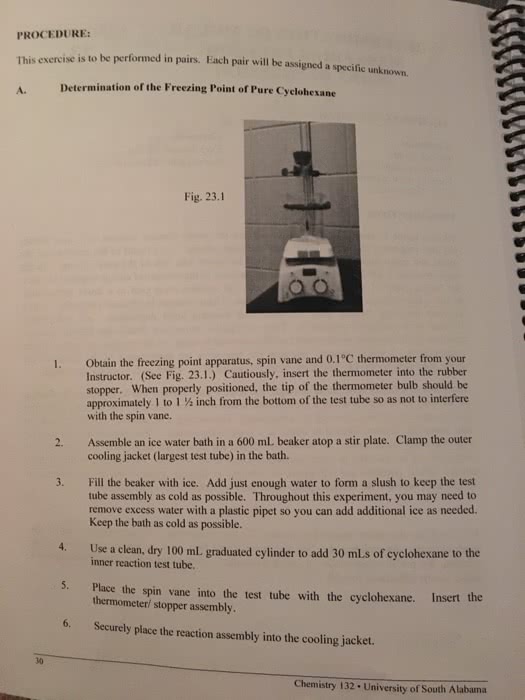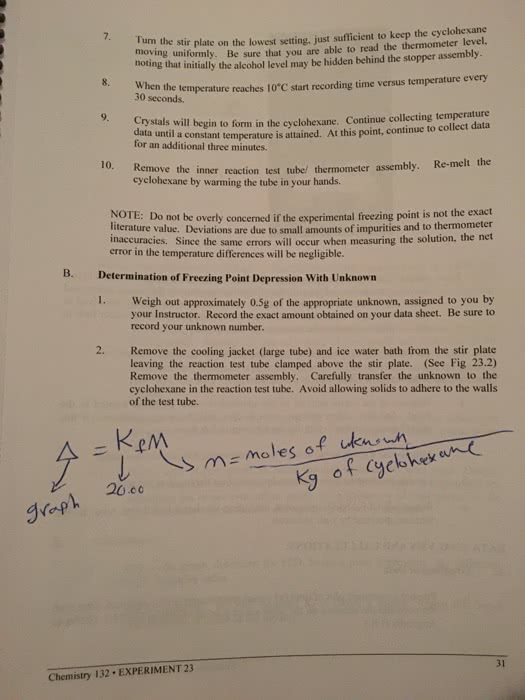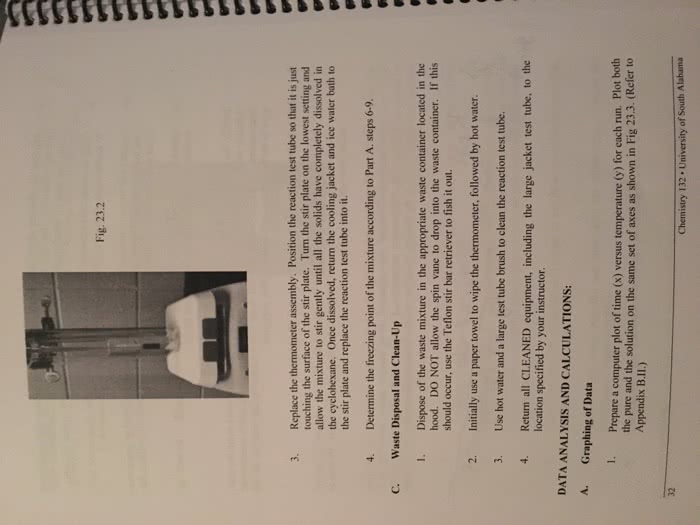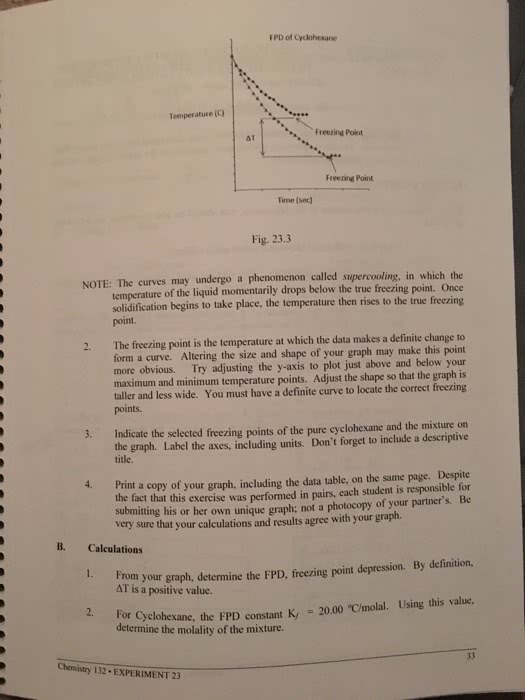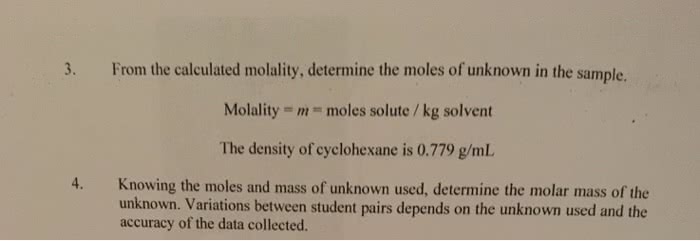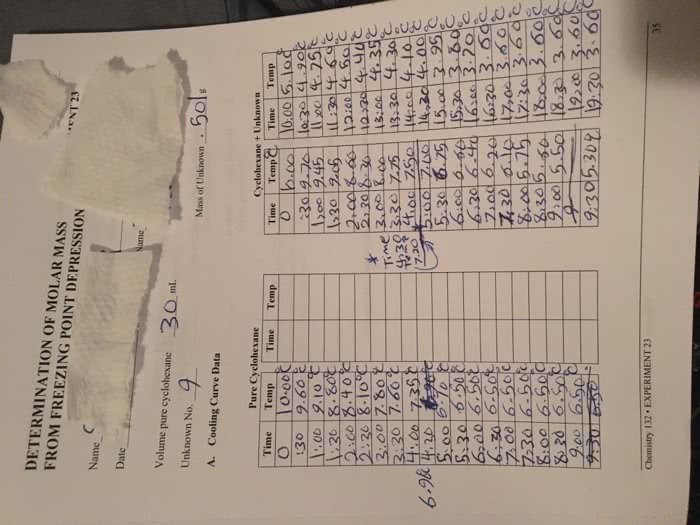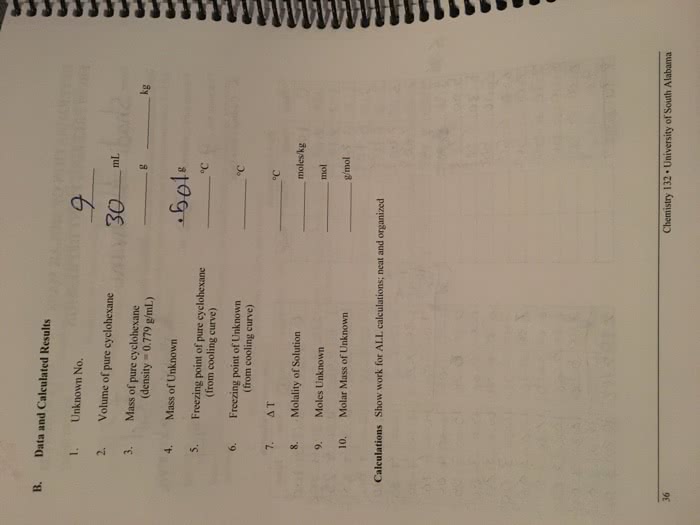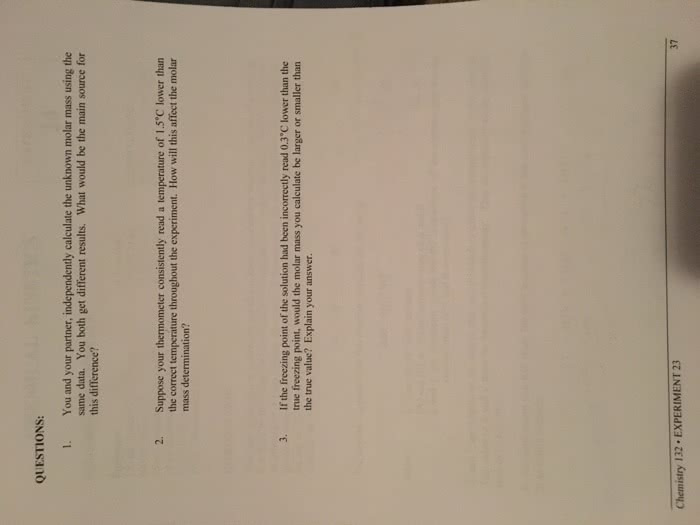CHEM 123N Lecture Notes - Lecture 9: Boiling Point, Osmotic Pressure, Molality
Document Summary
Depend only on quantity of solute, not identity / chemical composition. Vapor pressure o(cid:257) (cid:376)olatile sol(cid:376)e(cid:296)t o(cid:376)er a solutio(cid:296) = sol(cid:376)e(cid:296)t"s (cid:295)ole fraction * pure solvent vapor pressure. Solutions of ionic substances often have a vapor pressure significantly lower than predicted because the mole fraction of the solvent includes total concentration of solute ions instead of formula units. If the solute to solvent forces are weak, the solvent is less tightly held in solution, and actual p soln is (cid:258)reater tha(cid:296) raoult"s predicted p sol(cid:296). P soln - vapor pressure of solution / pressure of solution. If the forces are strong, the solvent is more tightly held in solution, and the actual p sol(cid:296) < raoult"s predicted p sol(cid:296). But - ion dipole forces between dissolved ions and polar water molecules are very strong and form ion pairs. Vapor pressure is si(cid:258)(cid:296)i(cid:257)ica(cid:296)tly lo(cid:377)er tha(cid:296) raoult"s la(cid:377) predicts. Va(cid:296)"t ho(cid:257)(cid:257) factor (cid:706)i(cid:707) : actual de(cid:258)ree o(cid:257) dissociatio(cid:296).



